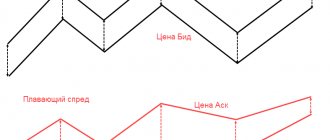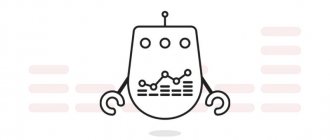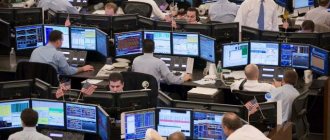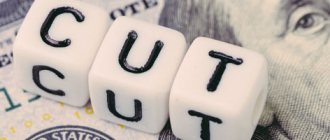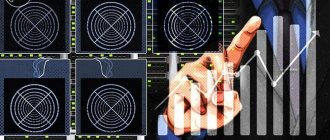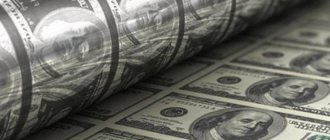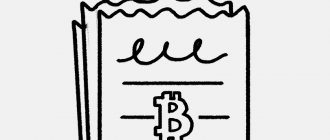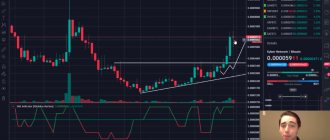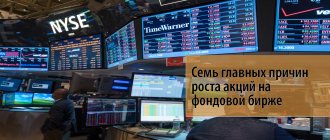Lazy Investor Blog > Stock Exchange
Anyone who has had to make transactions with securities on the stock exchange knows that in the flow of quotes the full name of the issuer, for example, PJSC MMC Norilsk Nickel, is usually not found. Instead, a code of several letters or a combination of letters and numbers is mentioned. This is the same unique identifier that designates a specific asset - a stock ticker. Let's figure out what it is.
How did tickers appear?
The word “ticker” appeared in stock exchange slang in the USA in 1869. Then a device was created that transmitted stock quotes by telegraph and printed them on a special tape. This device is called ticker tape machine. This method of data transfer was not very fast, so any time savings were greatly welcomed. This is how a system of designating assets using short letter combinations - from 1 to 3 characters - appeared. The expression “news feed” is still widely used.
In Britain, until 1996, the abbreviation EPIC (Exchange Price Information Computer) was used, which can be translated as “exchange price information.” Currently, it is still popular, although it has been officially abandoned in favor of TIDM, which stands for Tradable Instrument Display Mnemonics. The Russian name “code” is not entirely successful, since it is often confused with the international ISIN code (International Securities Identification Number). This is an identification number made up of letters and numbers and used internationally. ISIN is assigned by the Association of National Numbering Agencies. Each trading instrument has its own ISIN, including:
- Stock;
- Indexes;
- Shares;
- Bonds;
- Futures;
- Options;
- Currencies.
But not every instrument has tickers. An additional difference between them is that the same ISIN code is used all over the world, but the ticker symbol is unique only to a specific exchange.
Exchange symbols
Shares
tickers that are, if possible, consistent with their brand on the market. The number of symbols is from 1 to 6. One symbol in the ticker has very well-known companies that have staked out this right for a long time. For example, it is designated as “F”, the banking “City Group” as “C”.
Below are the stock symbols of well-known Russian and foreign companies:
- Visa – denoted by the prestigious single-letter symbol V;
- FGC UES – FEES;
- Qiwi – QIWI;
- Lukoil – LKOH;
- Surgutneftegaz – SNGS;
- Aeroflot – AFLT;
- Severstal – CHMF;
- Rosneft – ROSN;
- Novatek – NVTK;
- McDonald's - MCDS;
- Unipro – UPRO;
- Tatneft – TATN;
- Rostelecom – RTLK;
- RusHydro - HYDRO
- Children's World - DSKY;
- Norilsk Nickel – GMKN;
- Alrosa – ALRS;
- Apple - AAPL;
- MMK – MGMK;
- Magnet – MGNT;
- YNDX - Yandex;
- Rusal - RUAL.
The above list contains tickers that indicate companies on the Moscow Exchange. However, the listed companies and their shares are traded on the St. Petersburg Mercantile Exchange under the same symbols. Only a few, when admitted to foreign sites, change their tickers due to the fact that they are already occupied by other corporations.
Look at the investment conditions of these brokers: Finam, BCS and Tinkoff
Indexes
Indices calculated on the largest stock exchanges in different cities of the world reflect the situation on the stock market of the country where the index is calculated. Its level, in turn, shows the general situation in the macroeconomy in general and its individual sectors in particular. For example, in some countries the calculation of an index of high-tech companies is very popular.
Typically, the index calculation algorithm is based on calculating the weighted average price of shares or other securities of the largest companies in a country or region of the world.
Exchange index tickers:
- Moscow Exchange - IMOEX;
- RTS - RTSI;
- NDX – NASDAQ index;
- FTSE – UK index;
- N225 – Nikkei index of Japan (the largest 225 companies in the country)
- DJI – Dow Jones index;
- SPX – S&P index.
Knowledge of the indices themselves and their tickers is useful for trading many instruments, especially units of mutual funds and ETFs. The latest index is especially widely used among traders - S&P (500 largest US companies). It is popular because the American stock market is still larger than all others combined.
Dividends paid by S&P 500 companies
ETF
Mutual investment funds or ETFs in the American and other stock markets are very popular among investors. It is known that such structures accumulate gigantic funds: private pension and medical funds, free funds of investors. That is why these institutions are known for their reliability.
Tickers of famous ETFs in Russia and abroad:
- SPY is the most famous ETF from the S&P 500;
- ADRU – European ADR index;
- EFA – index of shares of developed countries (excluding the USA);
- RSX – Russian stock index;
- GDX – Market Vectors Gold Miners ETF;
- EMJ – iShares MSCI Japan Index;
Bonds
The bond market is tens of times larger than the stock market. This is due to the fact that debt securities have the right to be issued by companies of any organizational and legal form, as well as government bodies.
In Russia, the most popular and liquid bonds are OFZs issued by the Ministry of Finance of the Russian Federation, as well as bonds of the country's largest corporations and banks.
As such, there are no tickers for bonds. Instead of a ticker, an ISIN is usually indicated. The short name of the securities is also used, indicating their name and series.
Examples of ISIN codes for securities
Currencies
On the Forex currency market, all traded monetary units are assigned a certain code (they are not often called tickers):
- AUD – Australian dollar;
- CHF – Swiss franc;
- CNY – Chinese yuan;
- EUR – euro;
- GBP – British pound sterling;
- JPY – Japanese yen;
- RUB – Russian ruble;
- USD – US dollar.
Futures
Futures tickers include letters and numbers. The letters indicate the type of raw material, metal or other product, the first digit is the month, and the second is the year of the expiration date. Thus, the futures for Brent oil with expiration in August 2022 is designated as BR-8.20.
Futures symbol for Gazprom shares
What are tickers used for?
What practical benefits do tickers bring today? Speed and compactness of information transfer? Yes, however, this is important primarily in mobile applications, but most desktop terminals, for example, QUIK, can display both tickers and company names.
And yet there is a strong argument in favor of using tickers. Let's imagine that shares of companies with similar names are traded on the stock exchange. A situation is possible when a not very attentive investor confuses them and buys shares that are not the ones he planned. This is exactly what happened in the USA in the spring of 2022.
A small Chinese telecommunications equipment manufacturer, Zoom Technologies (ticker: ZOOM), has been on the stock market since 1990, but until recently did not attract much attention from American investors. And so it was until the moment when the American company Zoom Video Communications with the ticker ZM announced its entry to the NASDAQ stock exchange. This happened on March 22, 2019. In one day, Zoom Technologies shares rose in price from 0.5 cents to $0.6. Despite warnings from observers that there was confusion, investors continued to frantically buy shares of the Chinese company.
I also recommend reading:
Boeing shares – what should investors expect?
Boeing shares: heading for takeoff?
And on April 18, 2019, Zoom Video Communications finally entered the American market. By this time, the maximum quotes of Zoom Technologies had already risen above $5. During the day, the market figured out what was going on. By the evening, shares of Zoom Video Communications had already shown an increase of 72%, while shares of Zoom Technologies had fallen by almost half. And yet, the overall increase in quotations by 1000 times over the course of about a month, and even as a result of a simple mistake, is an unprecedented event in history. It seems that investors did not pay attention to the companies' tickers, but only reacted to the word Zoom, which appears in both names. The chart shows only the history of quotes in 2022, since against its background the previous prices seem to be a flat line. The sharp increase in transaction volumes in April and May is striking.
So, the most obvious benefit of using stock tickers is the unambiguous identification of a security, at least within a given site. It is theoretically possible that in other markets exactly the same ticker could correspond to a different security, since there is no single international register of stock tickers. However, no such cases have been reported so far.
Another argument in favor of using stock tickers is a simple way to convey to investors important information related to a security or issuer. On US exchanges, this is an additional symbol that is located after the main ticker and is separated from it by a dot or hyphen. Possible options: A, B, D, E, J, Q, V. For example, the prefix A means class A shares, which provide voting rights at a meeting of shareholders, but no guaranteed dividends. In contrast, B shares are preferred because they guarantee dividend income but do not necessarily carry voting rights. The prefix Q means that the company is in bankruptcy. Exact information about what the prefix means in each specific case can be obtained from the broker.
I also recommend reading:
Brief overview of the mobile version of FinamTrade in comparison with competitors
Why is FinamTrade better for beginner investors?
Tickers of Chinese securities for domestic use are presented in the form of hieroglyphs, so they are not readable for investors from other countries. Therefore, alphanumeric nomenclature is used for them. It does not carry any semantic load, but it allows you to distinguish tickers from each other. There is even more confusion with names here than on US stock exchanges.
For example, shares of the world-famous electronics manufacturer Huawei Technologies are not traded on the stock market. If you type “Huawei shares” into Google, you will get quotes from another company – Huawei Culture with the ticker 002502. To further complicate the situation, the former name of this company is Huawei Technology. But this is not a manufacturer of electronics, but of toys for young children. Unfortunately for investors, there is nothing to advise here. Just be as careful as possible and focus not on the names, but on the tickers.
You can make a mistake in tickers
Despite their precise identification, it is easy to confuse some similar tickers. For example, shares of MMK (MAGN), Magnit (MGNT) and +Mosenergo (MSNG).
Several Russian companies have interesting abbreviated names:
- SIBN - Gazpromneft. Previously ;
- CBOM (Credit Bank of Moscow) - “Moscow Credit Bank”;
- FIVE - "X5 Retail Group";
A curious incident in history
The story of how investors mixed up two similar tickers and, as a result, accidentally dispersed the shares of the wrong company several times. We are talking about the Chinese manufacturer of telecommunications equipment Zoom Technologies (ZOOM). Investors confused this company with Zoom Video Communications (ZM), which, after its IPO, went public in 2022. Thus, the Chinese ZOOM, purely by chance, rose in price by 100 times, because traders confused it with ZM. After a rapid rise in stock quotes, ZOOM shares rolled back.
What else is useful to know about tickers
The presence of a ticker means that this instrument is admitted to listing on the exchange. Reference information, including both tickers and ISINs, for all securities admitted to trading on the Moscow Exchange, is available at moex.com/ru/listing/securities-list.aspx. However, this table is cumbersome and inconvenient for searching tickers. In a compact and convenient form, the shares along with tickers from the first level quotation list are presented here: moex.com/a3890, and the full list of Moscow Exchange shares along with current quotes is here: smart-lab.ru/q/shares/order_by_short_name/asc/.
Ordinary shares of Russian companies have tickers of four capital Latin letters, preferred ones - of five letters with the addition of a Latin P at the end. For example, Sberbank tickers are SBER and SBERP for common and preferred shares, respectively. Tickers of Russian companies used on the Moscow Exchange are mostly intuitive and similar to the names. This is not the case on foreign trading platforms. On the London Stock Exchange, Sberbank shares in the form of American depositary receipts are traded with the ticker SBNCyq.L.
Russian bonds do not always have stock tickers due to their diversity. At the same time, they all clearly differ in ISIN codes. Some of the bonds have both types of codes. These are OFZs, municipal bonds, and part of corporate bonds (banks and other large issuers). Tickers contain information about the issuer: OFZ 26223, Yakutia 35011, RSHB 01T1. All other information about a specific issue can be found on the website rusbonds.ru.
The situation with shares of American companies is special. In the era of the ticker telegraph, the most popular stocks were identified by single-letter tickers. This saved time when manually entering and printing quotes: traders who knew how to read tape paid well for access to operational information. With the development of computer technology, the time factor has lost its former importance. However, single-letter tickers are still used by companies such as Ford (F), AT&T (T), Visa (V). True, now it is rather a tribute to history and a matter of prestige. Basically, 3-4 letter tickers are used on American exchanges.
I also recommend reading:
Earnings per share when valuing a company
Why Earnings per Share Matter
It has been noticed that the popularity of securities and even the capitalization of a company clearly correlates with how well their tickers are selected. A combination of letters that seems meaningless has a negative impact on the popularity of the asset. On the contrary, association with something widely known makes the asset attractive in the eyes of investors. Here are some examples.
The legendary US musical instrument manufacturer Steinway Musical Instruments had the New York Stock Exchange ticker LVB - short for Ludwig van Beethoven. This emphasized the unquestioned authority of the company in the eyes of musicians. In 2013, 100% of the issuer's shares were purchased by the investment company Kohlberg & Company and the listing on the stock exchange was terminated. The graph shows that this event was accompanied by a rapid increase in Steinway stock prices.
The already mentioned AT&T inherited its own ticker from the word “Telephone”. Currently it is the world market leader in its segment. Judging by the stock price chart, it may seem that the company is not doing particularly well.
The highs shown at the turn of the 2000s are indeed still very far away. But we must take into account that these peaks were shown on relatively small volumes, and even during the dot-com bubble. The company's capitalization today is many times higher. Moreover, a program for restructuring assets and developing the company is being launched. According to optimistic forecasts, AT&T shares could rise to all-time highs as early as 2022.
Futures tickers
Futures have the following short symbols:
[Underlying Asset Identifier]—[Month of Execution].[Year of Execution]
This scheme is due to the fact that futures have an expiration date, that is, they are not quoted indefinitely like stocks or stock indices. To prevent investors from getting confused, they are indicated with an exact delivery date.
Instead of a month, letters are sometimes written. The following letter designations for months are accepted on the Moscow Exchange:
- F - January;
- G - February;
- H - March;
- J - April;
- K - May;
- M - June;
- N - July;
- Q - August;
- U - September;
- V - October;
- X - November;
- Z - December;
Symbols by country[edit]
Australia[edit]
In Australia, the Australian Securities Exchange uses the following conventions: a three-digit base symbol, the first and third symbols are alphanumeric and the second is alphabetic.
ETF, ETMF can consist of 3 or 4 characters. Exchange warrants and exchange options consist of 6 characters. ETO may have numbers in the sixth digit. Fourth, fifth and sixth letter ASX code extensions
| D[AZ] | Providing deferred settlement, a temporary code typically used during consolidation/reverse split. Used for both shares and options of a company. |
| H[AZ] | Bonds/Debt |
| F[AZ][AZ] | Exchangeable Warrants |
| G or G[AZ] | Convertible debt |
| H or H[AZ] | Unsecured note |
| I [AZ] [AZ] | Installment order |
| LV | Non-voting or limited voting |
| O or O[AG] | Company option |
| P[AZ] | Preferential/interest bearing securities |
| R or R[AZ] | Company rights |
| W[AZ][AZ] | Exchangeable Warrants |
| U[AZ][AZ] | Exchangeable Warrants |
| V [AZ] [AZ] | Exchangeable Warrants |
Canada [edit]
In Canada, the TSX and TSXV of the Toronto Stock Exchange use the following special codes after the ticker:
TSX "behind the dot" extensions and other special codes [5]
| AB - share class | NO, NS, NT - notes | S - US special conditions |
| DB - debt obligations | P - Capital Pool Company | U, V - US funds |
| E —dividends on capital | PR - preferred | UN - units |
| H - NEX market | R —subscription receipts | W - when issued |
| IR - installment payment | RT - rights | WT - warrants |
United Kingdom [edit]
In the United Kingdom, until 1996, stock indexes were known as epics, named after the London Stock Exchange's exchange of computer price information (for example: "MKS" for Marks and Spencer). Following the introduction of the Sequence trading platform in 1996, EPICs were renamed Tradable Instrument Display Mnemonics
(TIDM), but are still commonly known as EPIC. Shares can also be identified by their SEDOL number (Stock Exchange Daily Official List) or their ISIN (International Securities Identification Number).
United States[edit]
In the United States, modern letter-only tickers were developed by Standard & Poor's (S&P) to establish a national standard for investing. Previously, one company could have many different ticker symbols as they varied across dozens of individual stock markets. The term ticker
refers to the noise produced by ticker tape machines that were once widely used by stock exchanges.
The S&P system was later standardized by the securities industry and modified over the years. Share symbols for preferred shares are not standardized. [6]
Some companies use a well-known product as their ticker symbol. Belgian brewer InBev, maker of Budweiser beer, uses "BUD" as the three-letter ticker symbol for American Depositary Receipts, symbolizing its top product in the United States. Its competitor, the brewing company Molson Coors, uses a similar beer symbol - TAP. Likewise, Southwest Airlines pays tribute to its headquarters at Love Field in Dallas with its "LUV" symbol. Cedar Fair Entertainment, which operates large amusement parks in the United States, uses "MERRY" as its symbol. Harley-Davidson uses "HOG", which is slang for one of its motorcycles.[7] Yamana Gold uses "AUY" because in the periodic table of the elements, "Au" is the symbol for gold. Sotheby's (a famous auction house) uses the BID symbol.
Although most symbols are derived from the company name, sometimes it is the other way around. Tricon Global, owner of KFC, Pizza Hut and Taco Bell, adopted the "YUM" symbol to represent its corporate mission when the company was spun off from PepsiCo in 1997. In 2002, the company changed its name to match its symbol, adopting the name Yum! Brands. [8]
Sometimes the symbols change to reflect mergers. Before its merger with Mobil Oil in 1999, Exxon used the phonetic spelling as its ticker symbol. After the merger, the symbol of the company became “HOM”. After Hewlett-Packard merged with Compaq, the new company began using the ticker HPQ. (The former symbols were HWP and CPQ.) AT&T's ticker symbol is simply "T"; accordingly, on Wall Street the company is simply called "Telephone" (the T symbol is so well known that when the company was purchased by SBC, it took the AT&T name, drawing on its history and retaining the desired single-letter symbol).
Here are some examples of US stock symbols:
- A - Agilent Technologies
- AAPL - Apple
- BRK.A - Berkshire Hathaway (Class A shares)
- C - Citigroup
- GOOG - Alphabet Inc.
- HOG - Harley-Davidson
- HPQ - Hewlett-Packard
- INTC - Intel
- KO - Coca-Cola Company
- LUV - Southwest Airlines (after their main hub at Love Field)
- MMM - Minnesota Mining and Manufacturing (3M)
- MSFT - Microsoft
- T - AT&T
- TGT - Target Corporation
- TXN - Texas Instruments
- WMT - Walmart
Previously, looking at a U.S. stock symbol and the codes attached to it would allow an investor to determine where a stock was trading;
however, in July 2007, the Securities and Exchange Commission approved a rule change allowing companies moving from the New York Stock Exchange to the Nasdaq to retain their three-letter symbols; DirecTV was one of the first companies to make this move. When first implemented, the rule change did not apply to companies with one or two letter symbols [9], but subsequently any stock could move from the NYSE to the Nasdaq without changing its symbol. CA, Inc. , trading under the symbol CA, moved from the NYSE to the Nasdaq in April 2008 and retained its two-letter symbol. [10] NYSE dotted or Nasdaq five-letter codes and other special codes
| A - Class "A" | K - without voting rights (often) | U - Units |
| B - class "B" | L - Miscellaneous | V - Unfinished Release and Distribution |
| C - NextShares | M - fourth class - preferred shares | W - Guarantors |
| D - New release or reverse split | N - third class - preferred shares | X - Mutual fund |
| E - Overdue SEC Filings | O - second class - preferred shares | Y - American Depositary Receipt (ADR) |
| F - Foreign | P - first class preferred shares | Z - Various situations |
| G - first convertible bond | Q - in bankruptcy | Special codes |
| H - second convertible bond | R - Rights | PK - Pink sheet indicating over-the-counter |
| I - third convertible bond | S — Benefit shares | SC - Nasdaq Small Cap |
| J - Share of votes - special | T - with guarantees or rights | NM - Nasdaq National Market |
Single letter ticker symbols[edit]
- A: Agilent Technologies (previously used by Anaconda Co., American Medical Buildings Inc., Attwoods PLC and Astra AB [11])
- B: Barnes Group (formerly used by Bankers Utilities Corp. and Baldwin Lima Hamilton Corp.)
- C: Citigroup (formerly used by Chrysler [11])
- D: Dominion Energy (formerly used by Douglas Aircraft Inc. and Dart Industries Inc.)
- E: Eni SpA (formerly used by Erie Lackawanna Railway Co. and Transco Energy Co.)
- F: Ford Motor Company
- G: Genpact (previously used by Greyhound Dial Corp. and Gillette [11])
- H: Hyatt (formerly used by Hupp Corp., Hardee's Food Systems Inc., Harcourt General Inc., Helm Resources Inc. and Realogy [11])
- J: Jacobs Engineering Group (formerly used by J Net Enterprises Inc. [11] and Standard Oil Co. of New Jersey)
- K: Kellogg
- L: Loews Corporation [12] (formerly used by Liberty Financial Companies Inc., Sinclair Oil Corp. and Liberty Media [11])
- M: Macy's, Inc. (previously used by Marcor Inc. [11])
- O: Realty Income Corporation (formerly Odetics Inc.)
- R: Ryder System Inc. (formerly used by Uniroyal Inc. and LF Rothschild Holdings Inc.)
- T: AT&T (formerly used by AT&T Corp.)
- U: Unity Software (formerly used by US Airways)
- V: Visa Inc. (formerly used by Vivendi, New York New Haven & Hartford Railroad, Irving Bank Corp., Vivra Inc. and Viking General Corp.)
- W: Wayfair (formerly used by Westvaco [11])
- X: US Steel (formerly used by USX Corp.)
- Y: Alleghany Corporation
- Z: Zillow (formerly used by Woolworth Corp.)
Unassigned letters:
- I: formerly used by Intelsat, Itel Corp. and First Interstate Bancorp [13]
- N: Previously used by Inco [11] and NetSuite
- P: Formerly used by Pandora and Phillips Petroleum Company. [13]
- Question: Previously used by Quintiles Transnational Holdings Inc. and Qwest [11]
- S: formerly used by Sprint Corporation and Sears [11]
Other countries[edit]
In countries that use the Arabic script, and in East Asia, Latin-transliterated company names may be confusing to the inexperienced Western reader; stock symbols provide a simple means of clear communication in the workplace. Many Asian countries use numeric or alphanumeric ticker symbols instead of symbols to facilitate international trade.
- Industrial and Commercial Bank of China - 01398 [Hong Kong]
- HSBC - 00005 [Hong Kong]
- DBS Bank - D05 [Singapore]
- Jardine C&C – C07 [Singapore]
- TonenGeneral Sekiyu KK - 5012 [Japan]
- Toshiba Corp - 6502 [Japan]
- China CITIC Bank Corp Ltd - 601998 [Shanghai, China]
- Hubei Golden Ring Co Ltd - 000615 [Shenzhen, China]
- ASUSTeK - 2357 [Taiwan]
- Chunghwa Telecom Co Ltd - 2412 [Taiwan]
- Saudi Electricity Company - 5110 [Saudi Arabia]
History of tickers
The concept of “ticker” is known to professional traders, but the history of its origin is known to few. Initially, this term came from a special ticker device that was invented by T. Edison (1869). This device was used by trading platforms. With its help, exchanges transmitted urgent information. Thanks to this device, the first tickers appeared in the United States, designed to shorten entries in the process of transmitting them through a device that was essentially a telegraph.
Transmitting urgent information, typing up the full names of assets, was a lengthy and inconvenient process, so abbreviated symbols were introduced on the main exchanges, which eventually became tickers. Those that consisted of one letter went to shares of those companies (mainly railways) with which transactions were concluded most often. Over time, tickers on different trading platforms changed, and the symbols of the same letter went to the most liquid assets.
Interesting fact: the above device received data using wires. He printed them on a narrow strip of paper. From it it was possible to find out operational reports from stock exchanges. This phenomenon gave rise to the expression “read the tape”, popular among trading participants, which implies viewing current quotes.
